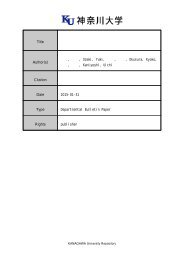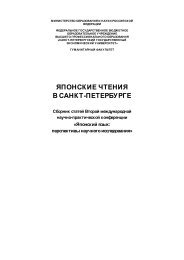to Learners with Special Educational Needs
e-textbook SEN
e-textbook SEN
You also want an ePaper? Increase the reach of your titles
YUMPU automatically turns print PDFs into web optimized ePapers that Google loves.
Pokrivčáková, S. et al. (2015). Teaching Foreign Languages <strong>to</strong> <strong>Learners</strong> <strong>with</strong> <strong>Special</strong> <strong>Educational</strong> <strong>Needs</strong>:<br />
e-textbook for foreign language teachers. Nitra: Constantine the Philosopher University. 128 p.<br />
ISBN 978-80-558-0941-0<br />
Dyslexic children find it demanding <strong>to</strong> acquire new words implicitly and they prefer explicit<br />
explanation. Still, context is helpful and can also facilitate the memorization of words. Multisensory<br />
methods are helpful and can involve different learner types. Usually the oral<br />
presentation of the word is also support in other ways, Using flashcards, gestures, objects, mind<br />
maps stimulate the visual channels. The kinaesthetic/tactile learning of vocabulary can be<br />
supported by mime, tracing the words in the air, building the words from the e.g. wooden letters<br />
(or paper). This is a typical activity in re-education and compensation applied in mother <strong>to</strong>ngue.<br />
Teaching foreign languages is based mostly on using strategies analogically.<br />
“Visualizing the word can be a successful strategy for some dyslexic pupils. This process<br />
involves the following:<br />
Look at the word<br />
Cover the word <strong>with</strong> a piece of paper<br />
Try <strong>to</strong> see the word - visualize it - on the paper<br />
Copy the word as you see it<br />
Check <strong>to</strong> see if you have spelt the word correctly<br />
Have a ten-minute break and then repeat the exercise<br />
A few hours later repeat this again<br />
Then repeat this at various times over the next few days<br />
Add a new word <strong>to</strong> the list each week and repeat the above sequence” (Reid & Green, 2011, p. 41).<br />
<strong>Learners</strong> can use picture dictionaries <strong>to</strong> better remember and visualise words and phrases.<br />
The possibility <strong>to</strong> transfer letters in<strong>to</strong> the drawings is suggested by experienced teachers and<br />
scholars.<br />
NION<br />
T R A I<br />
N<br />
50






